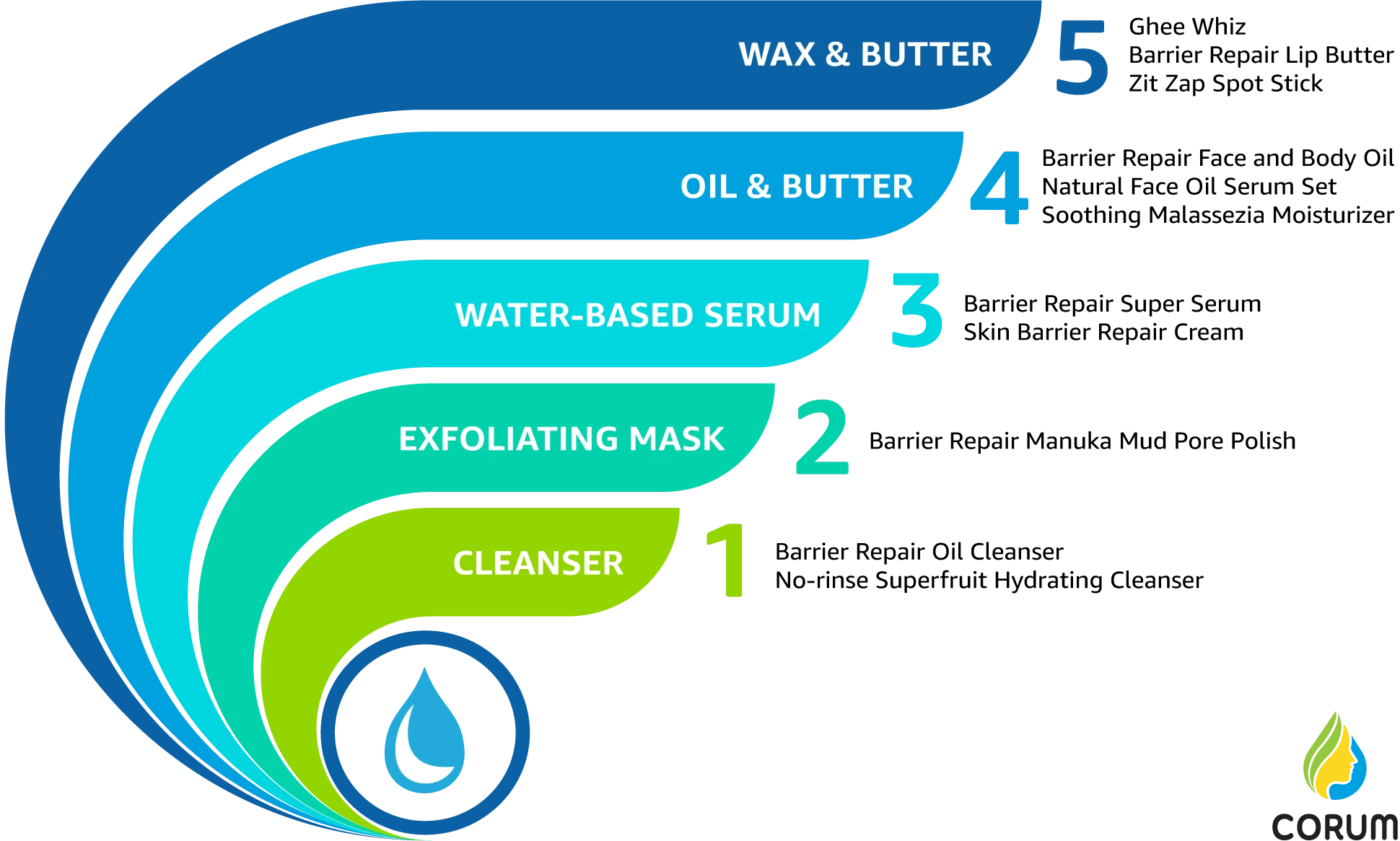
The order in which you apply skincare products plays a key role in their effectiveness and your overall results. Below is a general layering guide for optimal skin health.
Important: This routine is intended for individuals without Malassezia-related conditions such as fungal acne (Malassezia Folliculitis), eczema (Atopic Dermatitis), dandruff (Seborrheic Dermatitis), Pityriasis Versicolor, razor bumps, hot tub rash, or barber’s itch. If you’re dealing with any of these, it’s essential to first address Malassezia yeast overgrowth with a targeted routine: A Good Skincare Routine for MALASSEZIA-AFFECTED SKIN.
Here are some additional tips for layering your skincare products for optimal results:
By following these tips, you can ensure that you are layering your skincare products for optimal results. If you have any questions about layering Corum products, don’t hesitate to contact us.